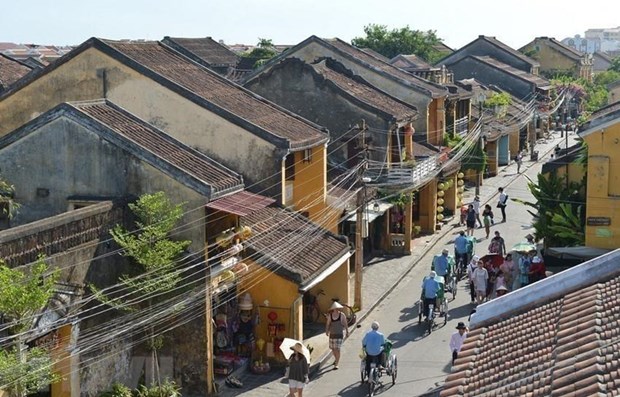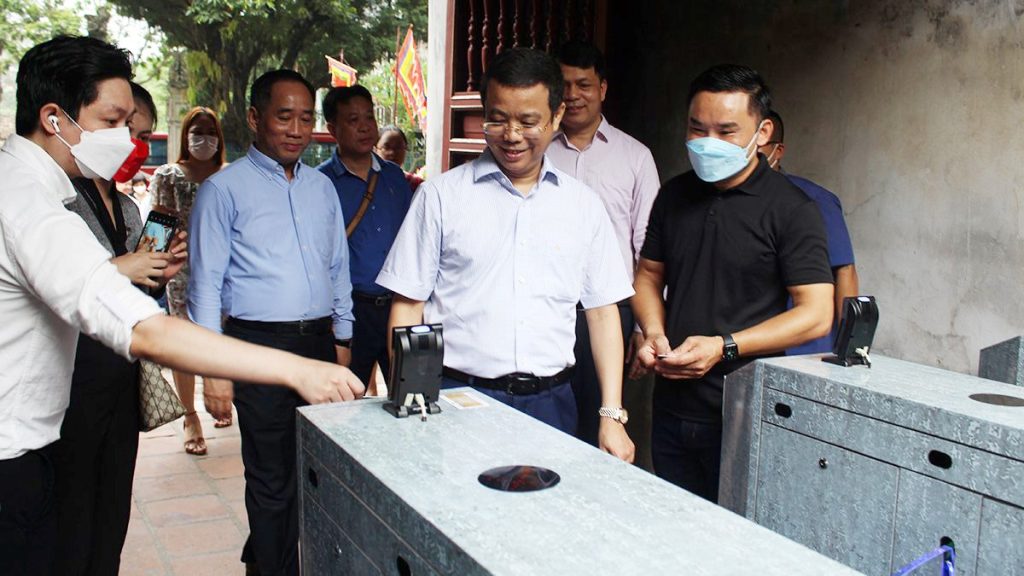(TITC) – Based on the ASEAN CBT Standard, the ASEAN CBT Checklist is build to enable assessment of the performance and achievement of CBT initiatives in the ASEAN region. Assessment is based on the degree to which a CBT initiative meets the quality requirements specified in the ASEAN CBT Standard.
The Checklist is divided into 10 criteria, 29 Sub-criteria and 188 Indicators. 88 of the indicators are Minimum requirements, 54 are Advanced requirements and 36 are Best practice requirements. These are used in the ASEAN Certification process. It is expected that CBT initiatives will seek to fully comply with all requirements over time.
Criterion 1: Community ownership and management
Community based tourism initiatives will be managed by communities to improve the well-being of communities.
Sub-criterion 1.1: Effective and transparent governance arrangements exist
| Indicators | Fully complies | Partly complies | Does not comply | Not applicable |
| Minimum requirements | ||||
| 1.1.1 The CBT initiative is managed by community members through a Committee elected for a maximum 5-year term. | ||||
| 1.1.2 The CBT initiative has a clear management structure with agreed roles and responsibilities. | ||||
| 1.1.3 Relevant national and provincial rules and regulations (including local by laws) are followed by those directly involved in CBT activities/operations | ||||
| 1.1.4 CBT Member recruitment meets any relevant national or local laws and regulations | ||||
| 1.1.5 CBT Member recruitment to provide specific tourism products and services (e.g. guiding, accommodation, food and beverage services) is conducted fairly by the CBT Committee based on gender equity and social inclusion principles. | ||||
| Advanced requirements | ||||
| 1.1.6 CBT Members are recruited based on their appropriate levels of knowledge and commitment to the CBT initiative and the specific role. | ||||
| 1.1.7 CBT Member appointments (and revocation of appointments) are approved by the CBT Committee. | ||||
| Total minimum requirements | ||||
| Totals advanced requirements |
Sub-criterion 1.2: Legitimate establishment is recognised
| Indicators | Fully complies | Partly complies | Does not comply | Not applicable |
| Minimum requirements | ||||
| 1.2.1 The CBT initiative has a clear vision, mission, long-term and short-term action plan. | ||||
| 1.2.2 The CBT initiative is registered with and recognised by relevant authorities.. | ||||
| Total minimum requirements |
Sub-criterion 1.3: Effective and transparent management exists
| Indicators | Fully complies | Partly complies | Does not comply | Not applicable |
| Minimum requirements | ||||
| 1.3.1 CBT management processes comply with all CBT standards and requirements, including for outside operators and FTOs. | ||||
| 1.3.2 CBT Members agree to an ongoing commitment to the ASEAN CBT Member’s Code of Conduct (Appendix 1). | ||||
| 1.3.3 The CBT initiative builds the capacity of the community to provide products, goods and services to visiting tourists. | ||||
| 1.3.4 The CBT initiative maximises use of goods and services provided by the community. | ||||
| 1.3.5 A clear financial management system exists and is accessible to community members. | ||||
| Advanced requirements | ||||
| 1.3.6 An annual action plan is documented and is accessible to community members. | ||||
| 1.3.7 Long-term goals and objectives are documented and accessible to the community members. | ||||
| Best practice requirements | ||||
| 1.3.8 Monitoring and evaluation mechanisms exist to assess the sustainability performance of individual and collective CBT activities. | ||||
| Total minimum requirements | ||||
| Total advanced requirements | ||||
| Total best practice requirements |
Sub-criterion 1.4: Effective partnerships exist
| Indicators | Fully complies | Partly complies | Does not comply | Not applicable |
| Minimum requirements | ||||
| 1.4.1 Guidelines exist for inbound tour operator interaction with the community. | ||||
| 1.4.2 In conducting activities, the CBT initiative avoids impacts on neighbouring communities. | ||||
| Advanced requirements | ||||
| 1.4.3 Relevant CBT stakeholders are identified and their roles in contributing to CBT initiatives are documented. | ||||
| 1.4.4 An established procedure exists for regular consultation with stakeholders. | ||||
| Best practice requirements | ||||
| 1.4.5 Cooperation exists with neighbouring communities. | ||||
| Total minimum requirements | ||||
| Total advanced requirements | ||||
| Total best practice requirements |
Criterion 2: Contribution to social well-being and quality of life
Community-based tourism initiatives will make a significant contribution to social well-being and quality of life of communities.
Sub-criterion 2.1: Human dignity is maintained
| Indicators | Fully complies | Partly complies | Does not comply | Not applicable |
| Minimum requirements | ||||
| 2.1.1 Sex tourism, drug trafficking, human trafficking, and exploitation of child labour are not tolerated or supported explicitly or implicitly. | ||||
| 2.1.2 CBT activities promote gender equity and social inclusion. | ||||
| Advanced requirements | ||||
| 2.1.3 CBT initiatives build the capacity for disadvantaged members of the community to appropriately benefit from tourism (this includes identifying roles for youth and the aged). | ||||
| Best practice requirements | ||||
| 2.1.4 CBT activities contribute to improving public benefits in the community (including access to basic facilities such as clean water, sanitation, energy, education, and healthcare). | ||||
| Total minimum requirements | ||||
| Total advanced requirements | ||||
| Total best practice requirements |
Sub-criterion 2.2: Benefits and costs are shared equitably
| Indicators | Fully complies | Partly complies | Does not comply | Not applicable |
| Minimum requirements | ||||
| 2.2.1 Clear and agreed benefit sharing arrangements exist. | ||||
| Advanced requirements | ||||
| 2.2.2 A community development fund exists that is used for initiatives benefiting the whole community. | ||||
| Best practice requirements | ||||
| 2.2.3 A process exists for equal opportunities in income generating activities. | ||||
| Total minimum requirements | ||||
| Total advanced requirements | ||||
| Total best practice requirements |
Sub-criterion 2.3: Local supply chains are enhanced and links exist to regional economies
| Indicators | Fully complies | Partly complies | Does not comply | Not applicable |
| Minimum requirements | ||||
| 2.3.1 Local community members dominate employment in CBT initiatives. | ||||
| 2.3.2 Local supply chains exist to generate multiplier effects in the community. | ||||
| Advanced requirements | ||||
| 2.3.3 Local community products are used in preference to imports (e.g., locally produced vs mass-produced souvenirs). | ||||
| Best practice requirements | ||||
| 2.3.4 Strong cooperation with other CBTs and regional private and government organisations exists to increase regional tourism. | ||||
| Total minimum requirements | ||||
| Total advanced requirements | ||||
| Total best practice requirements |
Sub-criterion 2.4: Local identity and cultural integrity are maintained, and valued cultural traditions are
enriched
| Indicators | Fully complies | Partly complies | Does not comply | Not applicable |
| Minimum requirements | ||||
| 2.4.1 Local identity is well maintained and awareness is created among the community and visiting tourists. | ||||
| 2.4.2 Cultural assets of significance to the local community and valued cultural traditions are identified, documented and endorsed by relevant communities. | ||||
| 2.4.3 Programs exist to authentically present, enhance and retain local cultural traditions towards protecting cultural integrity, identity and values. | ||||
| 2.4.4 Practices ensure that all rules, regulations and laws relevant to protection of culture and heritage are followed. | ||||
| Advanced requirements | ||||
| 2.4.5 CBT management supports the retention of traditional livelihoods and initiatives that create alternative livelihoods. | ||||
| 2.4.6 A code of visitor behaviour exists to inform visitors of appropriate behaviour within communities. | ||||
| Best practice requirements | ||||
| 2.4.7 A community decision-making process exists that identifies what cultural assets and traditions will be shared with visitors. | ||||
| 2.4.8 CBT management ensures the protection of cultural assets of the community. | ||||
| Total minimum requirements | ||||
| Total advanced requirements | ||||
| Total best practice requirements |
Tourism Information Technology Center




